Advertisers pay TV companies to air their commercials – right? Well, a new funding initiative from Channel 4 is set to change that. The independent public broadcaster is breaking with convention by putting up a £1m pot to subsidise the creative spend of new food advertisers across Channel 4 and its digital channels E4, More4 and Film4.
It’s not the first initiative of its kind. Digital channels have been running similar schemes for some time – children’s network, Nickelodeon, went to so far as to share revenue with companies it put together creatives for – but it is thought to be the biggest and, crucially, it’s being played out on terrestrial TV. So what’s behind Channel 4’s move? And will it succeed in bringing a new generation of food advertising to the channel?
Over the past year, there has been a noticeable slowing in the growth of food and drink TV ad spend. The latest Nielsen figures show that food and drink advertising between January and August this year is up just 2.6% on the same period last year. By way of contrast, there was 8.9% growth between 2006 and 2007 . Data from Billetts Media Consultancy shows that Channel 4 is faring better than most. Though it under-indexed the market in terms of its share of food and drink advertising in 2006, last year it over-indexed, having grabbed share from some of the digital channels.
But with advertising in other sectors falling through the floor, Channel 4 is keen to capitalise further on what must be one of the strongest slates of food programming on TV, with a roster including Jamie Oliver, Gordon Ramsay and recent signing Heston Blumenthal. Such strong food credentials make the channel an “environmentally perfect placement” for food brands, believes strategic sales group manager Chris Braithwaite.
Under the new scheme, companies are eligible for up to £100,000 towards the creative costs of a new campaign. The amount depends on the size of the media spend. There is a catch. Brands wanting to take Channel 4 up on its offer have to meet strict criteria.
Companies must not have any contractual obligations with other advertising agencies, and must not have an existing spend with Channel 4. They also have to agree to commit half of the media spend for the campaign to Channel 4. And, in a move unlikely to endear Channel 4 to advertising agencies, brands must use Channel 4’s in-house creative agency, 4creative.
Alongside the deal, the channel has also launched what Braithwaite dubs “the television equivalent of the Good Housekeeping Institute”, which allows companies to have microsites on Channel 4’s website and, subject to approval by Channel 4, include ‘As seen on www.channel4.com/food’ in their press and TV adverts. The scheme, he says, gives brands “approval through association” with the channel.
“Food brands need to justify their premium price,” he says. “Our food programmes are seen as premium, so this is something to tap into. This is a way to encourage advertisers to capitalise on our reputation. Plus now is a great time to advertise on TV. With the current economic climate people are spending more time at home.”
It’s no surprise Channel 4 is seeking new business. Though it has been successfully attracting food advertising to the channel, the overall financial outlook remains challenging. Only last week, it announced 150 staff were being made redundant as part of an efficiency drive to save £100m. Senior management at the channel have been lobbying for access to a share of the TV licence fee to steady the company’s finances. With such pressures, new money is welcome.
“Let’s be honest, we’re not doing this out of the goodness of our hearts,” Braithwaite says. “We’re investing £1m in the hope it will bring in much more. We are under pressure and we do need to keep investing on the commercial side or it’ll get much worse.”
Attracting the food brands
Channel 4 says it is targeting the food sector because there are more companies there than in other sectors that have never advertised on TV. The looming recession is surely another factor.
“The retailing side of food is particularly buoyant, especially adverts for cut-price promotions. With this, though, we’re trying to appeal to the quality side of the market and to smaller producers.”
It may not be easy, says Ian Twinn, director of public affairs at advertising trade body ISBA. “There are issues attracting food manufacturers to TV advertising,” he says. “It’s not just the regulations that have been introduced, but the climate of criticism around them also creates perceptual barriers to advertising. One problem is that people decide not to advertise. Couple that with tightened finances driving companies to reassess their ad spend and it’s a difficult climate.”
Of course, the initiative is a response to that, says Twinn. “Channel 4 is a business and it’s trying to get new customers through the door. The question is: will this convince anyone?”
Billetts Media Consulting managing partner Martin Sambrook believes it might. “Channel 4’s offering to advertising has improved as it becomes more mainstream. As 4 gets more magazine shows such as Paul O’Grady, it attracts more of the key market of housewives with children, though it is still relatively expensive when compared to other channels.”
Sambrook also has some reservations about the requirement for 50% of the media spend to be with Channel 4, especially as in a typical media campaign ITV would take a third of impacts and 40% of spend. “It’s a potential downfall to commit half your revenue to a single channel. Ratings can be fickle things over the course of a year – as ITV has found out.”
But is TV right for all brands?
Geoffrey Russell, director of media affairs for advertising agency trade body, the Institute of Practioners in Advertising, has other, more fundamental, concerns. “Planning an advertising campaign means working out the right message for the right medium,” he says. “Food manufacturers should ask themselves whether TV is necessarily the right medium – and whether Channel 4 is the right medium. Other outlets might be more cost-effective, subsidy or not.”
Companies will have their reasons for advertising on Channel 4, but Russell questions whether a subsidy will be one of them.
“The selection of Channel 4 should be based on its brand and the audience it delivers, not gimmicks,” he explains. “Choosing an agency is a very important decision and shouldn’t be done on the basis of one-off cut-price deals.”
It’s early days and no brands have yet signed up though Channel 4 says it is in talks with several. Whether Channel 4’s offer proves popular or not, the move could be a canny one, especially as it risks no financial loss if take-up is low.
Andy Niblett, director of trading at media buying company Feather Brooksbank, agrees it is. “It’s a really strong, trendsetting initiative, and very welcome,” he says. “No-one loses out.”
In times like these, any kind of financial aid is not to be sniffed at.
It’s not the first initiative of its kind. Digital channels have been running similar schemes for some time – children’s network, Nickelodeon, went to so far as to share revenue with companies it put together creatives for – but it is thought to be the biggest and, crucially, it’s being played out on terrestrial TV. So what’s behind Channel 4’s move? And will it succeed in bringing a new generation of food advertising to the channel?
Over the past year, there has been a noticeable slowing in the growth of food and drink TV ad spend. The latest Nielsen figures show that food and drink advertising between January and August this year is up just 2.6% on the same period last year. By way of contrast, there was 8.9% growth between 2006 and 2007 . Data from Billetts Media Consultancy shows that Channel 4 is faring better than most. Though it under-indexed the market in terms of its share of food and drink advertising in 2006, last year it over-indexed, having grabbed share from some of the digital channels.
But with advertising in other sectors falling through the floor, Channel 4 is keen to capitalise further on what must be one of the strongest slates of food programming on TV, with a roster including Jamie Oliver, Gordon Ramsay and recent signing Heston Blumenthal. Such strong food credentials make the channel an “environmentally perfect placement” for food brands, believes strategic sales group manager Chris Braithwaite.
Under the new scheme, companies are eligible for up to £100,000 towards the creative costs of a new campaign. The amount depends on the size of the media spend. There is a catch. Brands wanting to take Channel 4 up on its offer have to meet strict criteria.
Companies must not have any contractual obligations with other advertising agencies, and must not have an existing spend with Channel 4. They also have to agree to commit half of the media spend for the campaign to Channel 4. And, in a move unlikely to endear Channel 4 to advertising agencies, brands must use Channel 4’s in-house creative agency, 4creative.
Alongside the deal, the channel has also launched what Braithwaite dubs “the television equivalent of the Good Housekeeping Institute”, which allows companies to have microsites on Channel 4’s website and, subject to approval by Channel 4, include ‘As seen on www.channel4.com/food’ in their press and TV adverts. The scheme, he says, gives brands “approval through association” with the channel.
“Food brands need to justify their premium price,” he says. “Our food programmes are seen as premium, so this is something to tap into. This is a way to encourage advertisers to capitalise on our reputation. Plus now is a great time to advertise on TV. With the current economic climate people are spending more time at home.”
It’s no surprise Channel 4 is seeking new business. Though it has been successfully attracting food advertising to the channel, the overall financial outlook remains challenging. Only last week, it announced 150 staff were being made redundant as part of an efficiency drive to save £100m. Senior management at the channel have been lobbying for access to a share of the TV licence fee to steady the company’s finances. With such pressures, new money is welcome.
“Let’s be honest, we’re not doing this out of the goodness of our hearts,” Braithwaite says. “We’re investing £1m in the hope it will bring in much more. We are under pressure and we do need to keep investing on the commercial side or it’ll get much worse.”
Attracting the food brands
Channel 4 says it is targeting the food sector because there are more companies there than in other sectors that have never advertised on TV. The looming recession is surely another factor.
“The retailing side of food is particularly buoyant, especially adverts for cut-price promotions. With this, though, we’re trying to appeal to the quality side of the market and to smaller producers.”
It may not be easy, says Ian Twinn, director of public affairs at advertising trade body ISBA. “There are issues attracting food manufacturers to TV advertising,” he says. “It’s not just the regulations that have been introduced, but the climate of criticism around them also creates perceptual barriers to advertising. One problem is that people decide not to advertise. Couple that with tightened finances driving companies to reassess their ad spend and it’s a difficult climate.”
Of course, the initiative is a response to that, says Twinn. “Channel 4 is a business and it’s trying to get new customers through the door. The question is: will this convince anyone?”
Billetts Media Consulting managing partner Martin Sambrook believes it might. “Channel 4’s offering to advertising has improved as it becomes more mainstream. As 4 gets more magazine shows such as Paul O’Grady, it attracts more of the key market of housewives with children, though it is still relatively expensive when compared to other channels.”
Sambrook also has some reservations about the requirement for 50% of the media spend to be with Channel 4, especially as in a typical media campaign ITV would take a third of impacts and 40% of spend. “It’s a potential downfall to commit half your revenue to a single channel. Ratings can be fickle things over the course of a year – as ITV has found out.”
But is TV right for all brands?
Geoffrey Russell, director of media affairs for advertising agency trade body, the Institute of Practioners in Advertising, has other, more fundamental, concerns. “Planning an advertising campaign means working out the right message for the right medium,” he says. “Food manufacturers should ask themselves whether TV is necessarily the right medium – and whether Channel 4 is the right medium. Other outlets might be more cost-effective, subsidy or not.”
Companies will have their reasons for advertising on Channel 4, but Russell questions whether a subsidy will be one of them.
“The selection of Channel 4 should be based on its brand and the audience it delivers, not gimmicks,” he explains. “Choosing an agency is a very important decision and shouldn’t be done on the basis of one-off cut-price deals.”
It’s early days and no brands have yet signed up though Channel 4 says it is in talks with several. Whether Channel 4’s offer proves popular or not, the move could be a canny one, especially as it risks no financial loss if take-up is low.
Andy Niblett, director of trading at media buying company Feather Brooksbank, agrees it is. “It’s a really strong, trendsetting initiative, and very welcome,” he says. “No-one loses out.”
In times like these, any kind of financial aid is not to be sniffed at.








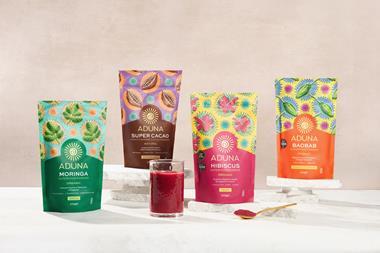
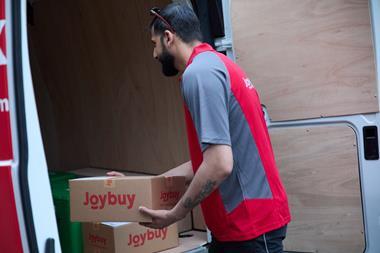

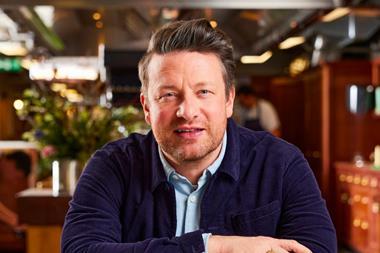
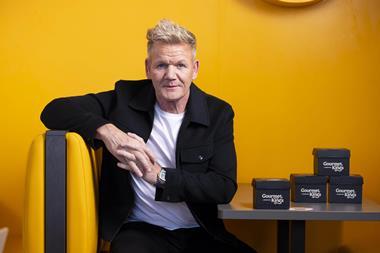


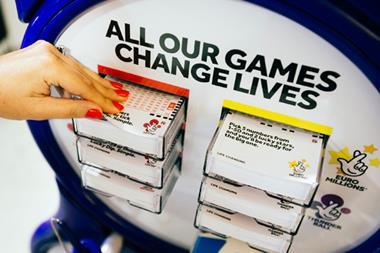



No comments yet